Minimalism and Financial Freedom: Simplify to Thrive
Category: Lifestyle
Discover How Minimalism Opens the Doors to Financial Freedom
If you’ve landed here, chances are you’re seeking a meaningful reset—a way to take control of your finances while creating a simpler, more fulfilling life. Maybe you’re overwhelmed by clutter and expenses that don’t align with your values, or perhaps you’re curious about how minimalism can be a powerful tool on your journey to financial independence. You’re likely someone who wants actionable insights, not just abstract philosophy. This post is crafted precisely for you: whether you’re a beginner exploring minimalism or someone who appreciates practical, real-world strategies to gain financial clarity.
Most resources out there might either focus heavily on frugality without addressing lifestyle balance or romanticize minimalism without practical financial application. Here, we bridge that gap by showing you how to streamline your possessions and mindset in a way that enhances your financial freedom. We’ll explore the key principles, actionable steps, common challenges, and inspiring examples that equip you to remove the noise, reduce unnecessary spending, and build lasting wealth — all while embracing a more intentional, simplified life. Stick with us to uncover how minimalism isn't just about less stuff but about gaining so much more: time, clarity, and true financial empowerment.
- Discover How Minimalism Opens the Doors to Financial Freedom
- The Philosophy of Minimalism: Understanding Its Core Principles and How They Relate to Money
- The Link Between Minimalism and Financial Freedom: How Simplification Boosts Wealth Building
- Assessing Your Current Financial and Lifestyle Situation: Tools and Techniques to Identify Waste and Opportunity
- Decluttering Your Finances: Practical Strategies to Reduce Expenses and Simplify Spending
- Mindful Consumption Habits: Shifting from Consumerism to Intentional, Purposeful Purchases
- Creating a Minimalist Budget: Designing a Plan That Supports Both Simplicity and Long-Term Financial Goals
- Building Multiple Income Streams: How Minimalism Can Support Entrepreneurship and Smart Investing
- Overcoming Challenges: Handling Societal Pressure and Emotional Attachments to Material Possessions
- Maintaining Minimalism for Financial Sustainability: Habits and Mindsets to Prevent Relapse
- Inspiring Case Studies: Real-Life Stories of People Who Achieved Financial Freedom Through Minimalism
The Philosophy of Minimalism: Understanding Its Core Principles and How They Relate to Money
Minimalism is much more than a design trend or a simple decluttering technique—it is a philosophical approach to life centered on intentionality, clarity, and purpose. At its core, minimalism challenges the consumer-driven mindset that equates happiness with owning more. Instead, it encourages focusing on what truly adds value to your life, which naturally extends to your financial decisions. When you understand minimalism’s fundamental principles, you unlock a powerful framework that reshapes your relationship with money.
The key principles of minimalism that directly influence financial freedom include:
- Intentional Consumption: Prioritizing purchases that align with your values and long-term goals helps prevent impulsive spending and reduces wasteful expenses.
- Quality over Quantity: Investing in fewer, higher-quality items often means spending less over time on replacements and repairs, improving both financial and emotional well-being.
- Simplifying Commitments: Streamlining your lifestyle—whether it’s subscriptions, memberships, or social obligations—frees up resources, both time and money, for what matters most.
- Embracing Contentment: Minimalism nurtures a mindset of gratitude and satisfaction, lowering the drive to acquire more possessions or keep up with societal pressures that often lead to debt.
- Financial Clarity and Transparency: By reducing clutter, minimalism encourages clear visibility of where your money goes, making budgeting and saving more straightforward and intentional.
By integrating these principles, minimalism acts as a catalyst for financial freedom—not by restricting you, but by empowering deliberate choices that elevate your financial health and overall quality of life. It creates space for you to invest in experiences, meaningful relationships, and future security, rather than accumulating excess stuff that drains your finances and steals your time. Understanding and embracing this philosophy is the first step toward a richer, simpler, and more financially independent life.

Image courtesy of Photo By: Kaboompics.com
The Link Between Minimalism and Financial Freedom: How Simplification Boosts Wealth Building
Minimalism and financial freedom share a deeply interconnected relationship where simplification acts as a powerful accelerator for building lasting wealth. When you intentionally reduce life’s excess—be it possessions, commitments, or unnecessary expenses—you free up both mental and financial resources. This streamlining naturally leads to better budgeting, increased savings, and more strategic investments, all essential components of financial independence.
Here’s how embracing minimalism directly boosts your wealth-building journey:
- Lower Overall Expenses: Fewer possessions and commitments mean fewer bills, less maintenance, and reduced impulse purchases. This shift helps you cut recurring costs and avoid money leaks that silently erode your financial health.
- Increased Savings Rate: With simplification, your prioritization sharpens, making it easier to funnel money into savings or debt repayment instead of frivolous spending. Higher savings enable you to leverage the power of compound interest and accelerate wealth accumulation.
- Greater Financial Flexibility: Minimalism promotes living below your means, so unexpected expenses or financial opportunities don’t destabilize your progress. This flexibility is crucial when building an emergency fund or investing in diverse assets.
- Better Focus on Value-Driven Goals: When you align spending with core values and long-term intentions, financial decisions become clearer and less emotionally driven. This clarity reduces stress and leads to smarter money management choices that favor sustainable growth.
- Reduced Debt Dependency: By minimizing lifestyle inflation and resisting consumerism, you avoid unnecessary debt—freeing up credit capacity and mental energy to focus on wealth-building activities instead.
In essence, minimalism provides the mental clarity and financial discipline necessary for transforming income into true financial freedom. By simplifying your life, you not only reclaim valuable time and focus but also create a strong foundation to grow and protect your wealth strategically. This link underscores why minimalism is more than a lifestyle choice—it's a practical, proven strategy to unlock financial empowerment and long-term security.

Image courtesy of Pixabay
Assessing Your Current Financial and Lifestyle Situation: Tools and Techniques to Identify Waste and Opportunity
Before you can embrace minimalism as a path to financial freedom, it’s essential to take a clear, honest look at your current financial and lifestyle situation. This assessment acts as the foundation for intentional change by highlighting where your money is going, where waste exists, and where opportunities lie for simplification and savings. Without this vital step, it’s easy to miss key expenses, overlook unnecessary commitments, or underestimate how your habits impact your financial goals.
Key Tools for Financial and Lifestyle Assessment
- Detailed Budget Tracking: Start by tracking every dollar you spend over at least one month using budgeting apps like Mint, YNAB (You Need A Budget), or even a simple spreadsheet. This helps break spending into categories—housing, food, subscriptions, entertainment, and discretionary purchases—revealing hidden costs and spending patterns that may no longer serve you.
- Lifestyle Inventory: Beyond dollars, list your monthly commitments including subscriptions, memberships, recurring services, and social obligations. Many times, we unknowingly maintain expenses out of habit or convenience rather than intention.
- Needs vs. Wants Analysis: Using your spending data, classify expenses into “needs” (essentials like groceries and utilities) and “wants” (non-essential items and luxuries). This exercise sharpens your understanding of where minimalism can trim excess without compromising well-being.
- Debt and Investment Review: Examine your debt balances, interest rates, and investment accounts to see how your current financial choices affect long-term wealth. Identifying high-interest debt or underutilized investment accounts creates clear targets for improvement.
- Emotional Spending Reflection: Recognize emotional triggers behind unnecessary purchases by journaling your spending decisions or reflecting on recent buys. This mindfulness supports breaking free from consumer habits that conflict with minimalism’s values.
Techniques to Identify Waste and Unlock Opportunities
- Automate and Audit: Set up automatic payments for essentials and savings goals to build discipline, then regularly audit your statements for forgotten or unused subscriptions that drain funds.
- The 30-Day Rule: Postpone non-essential purchases for 30 days to evaluate their true necessity and prevent impulse spending.
- Declutter for Dollars: Conduct a physical decluttering session and consider selling items you no longer use. This not only frees space but can provide a modest financial boost aligned with minimalist goals.
- Set Clear Financial Priorities: Define your top 3-5 financial goals—whether it’s building an emergency fund, paying off debt, or saving for retirement—to channel resources more effectively.
By applying these tools and techniques, you gain complete financial transparency and lifestyle clarity, empowering you to make smarter, value-centered decisions. This process uncovers waste and highlights new opportunities to reduce expenses, redirect savings, and ultimately accelerate your journey toward minimalist living and financial independence.

Image courtesy of Nataliya Vaitkevich
Decluttering Your Finances: Practical Strategies to Reduce Expenses and Simplify Spending
One of the most impactful ways to embrace minimalism and move toward financial freedom is by decluttering your finances. Just as an overflowing closet can create stress and confusion, a complicated financial landscape filled with redundant expenses, impulsive purchases, and unnecessary subscriptions can drain your resources and mental energy. Simplifying your spending habits not only reduces cash outflow but also cultivates greater financial clarity and control.
Practical Strategies to Reduce Expenses
- Eliminate Unnecessary Subscriptions and Memberships: Audit your recurring charges every month. Cancel services that no longer provide value or align with your current priorities—think streaming platforms, gym memberships, or software you rarely use.
- Consolidate and Streamline Bills: Look for opportunities to bundle utilities or negotiate lower rates on insurance, internet, or phone plans. Simplifying how you pay bills decreases administrative hassle and often results in cost savings.
- Adopt a Conscious Spending Approach: Before making any purchase, ask yourself if it supports your core values or long-term goals. This intentional mindset curbs impulse buying and encourages prioritization of essentials.
- Shop with a Minimalist Mindset: Focus on quality over quantity by investing in durable, multifunctional items that reduce the need for frequent replacement. Buying less but better saves money and reduces clutter.
- Use Cash or Budgeted Amounts for Discretionary Spending: Setting fixed limits for non-essential expenses helps maintain spending discipline and makes it easier to track where your money goes.
By incorporating these practical steps to declutter your finances, you create a leaner, more purposeful spending framework that supports saving, investing, and ultimately, achieving financial independence. Simplified finances reduce stress and provide the freedom to focus on what truly matters, making minimalism a powerful ally in reshaping your relationship with money.
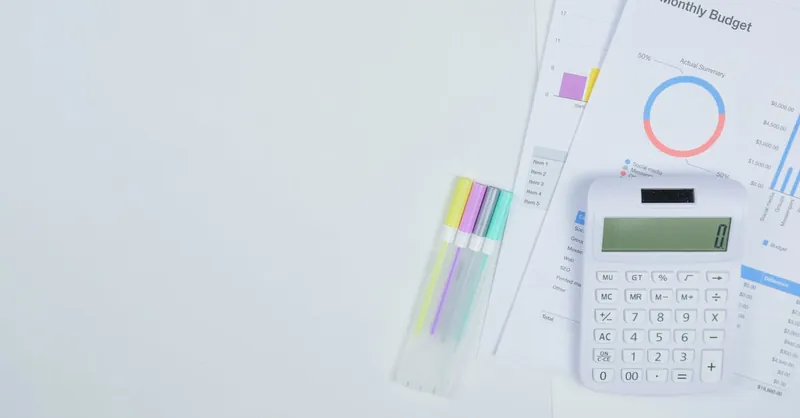
Image courtesy of Kindel Media
Mindful Consumption Habits: Shifting from Consumerism to Intentional, Purposeful Purchases
A core tenet of minimalism that directly impacts your path to financial freedom is cultivating mindful consumption habits. In a culture inundated with constant marketing and societal pressure to buy more, shifting from impulsive consumerism to intentional, purposeful purchasing empowers you to regain control over your finances and simplify your life. This mindset transformation is essential for reducing unnecessary expenses, minimizing waste, and ensuring every dollar spent aligns with your values and long-term goals.
How to Develop Mindful Consumption Habits
- Pause Before You Purchase: Implement a deliberate waiting period—such as 24 to 72 hours—for all non-essential purchases. This reflective pause helps curb impulse buying and allows genuine needs to surface.
- Identify Your Purchase Triggers: Understand emotional or social triggers that prompt unnecessary shopping, like stress, boredom, or the desire to fit in. Recognizing these patterns encourages healthier spending decisions.
- Focus on Purpose and Longevity: Prioritize buying items that serve a clear purpose, enhance your lifestyle, and offer durability. Investing in quality products that last reduces the cycle of frequent replacements and extra costs.
- Limit Exposure to Advertising: Reduce time spent browsing online stores or scrolling through advertisements to decrease subconscious consumer urges that drive overspending.
- Curate a Wishlist: Maintain a wishlist for potential purchases and revisit it periodically. Over time, many desired items lose their appeal, helping you refine what is truly necessary and valuable.
- Evaluate Post-Purchase Satisfaction: After acquiring something, assess whether it meets your expectations and needs. This ongoing feedback loop sharpens future purchase decisions and reinforces mindful habits.
By embedding these mindful consumption habits into your daily life, you align spending with purpose rather than fleeting desires. This intentional approach not only reduces financial waste and clutter but also nurtures gratitude and appreciation for what you own. Ultimately, shifting away from consumerism fosters deeper financial freedom by enabling you to allocate resources toward meaningful goals instead of material accumulation. Embracing mindful consumption transforms how you relate to money and possessions, creating a sustainable, simplified lifestyle that supports your journey to lasting wealth and personal fulfillment.
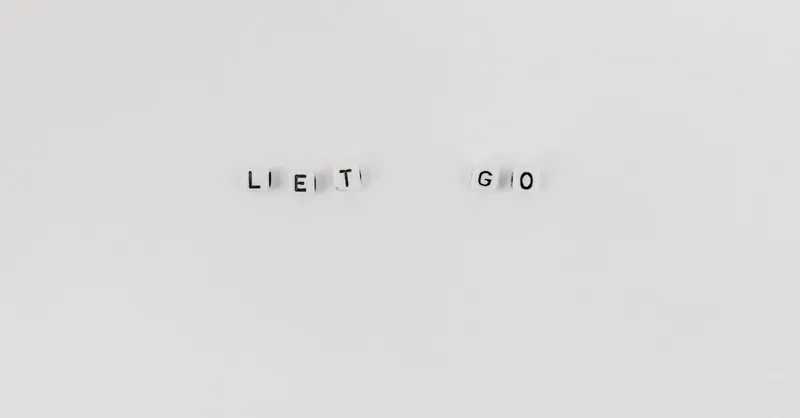
Image courtesy of Tara Winstead
Creating a Minimalist Budget: Designing a Plan That Supports Both Simplicity and Long-Term Financial Goals
Crafting a minimalist budget is a crucial step toward achieving financial freedom while embracing a simpler lifestyle. Unlike traditional budgeting methods that can feel restrictive or complex, a minimalist budget focuses on clarity, intentionality, and alignment with your core values. This approach strips away unnecessary categories and expense tracking overload, allowing you to concentrate on what truly matters — optimizing savings, reducing debt, and funding meaningful goals with minimal stress.
Principles of a Minimalist Budget
- Focus on Essentials First: Prioritize your fundamental needs — housing, utilities, groceries, healthcare, and transportation. By ensuring these are comfortably covered, you create a financial base that supports stability without clutter or extravagance.
- Simplify Expense Categories: Instead of tracking dozens of line items, group spending into broad, manageable categories such as “Living Expenses,” “Savings & Investments,” and “Discretionary Spending.” This reduces micro-managing and keeps your budget actionable.
- Set Clear, Purpose-Driven Goals: Define 2-3 long-term financial goals, such as building an emergency fund, paying down high-interest debt, or investing for retirement. Assign a fixed percentage or amount of income toward each goal, reinforcing intentional saving and spending behavior.
- Incorporate Flexibility: Life is dynamic, so allow room in your budget for occasional indulgences or unexpected expenses. A minimalist budget isn’t about deprivation—it’s about mindful allocation that balances discipline with freedom.
- Automate Wherever Possible: Automating bill payments, savings deposits, and investments minimizes cognitive load and helps guard against impulsive spending or missed deadlines, strengthening your financial habits effortlessly.
- Regularly Review and Adjust: Periodically—monthly or quarterly—evaluate your budget’s effectiveness. Check spending patterns, progress toward goals, and update allocations as your priorities or income change.
By designing a minimalist budget rooted in simplicity and intentionality, you build a financial plan that naturally supports sustainable living and wealth creation. This focused budgeting framework eliminates overwhelm and promotes transparency, revealing exactly where your money goes and ensuring every dollar serves your long-term financial freedom. Ultimately, a minimalist budget is not just a tool to control spending—it’s a strategic blueprint for transforming your financial life into one of clarity, purpose, and lasting security.
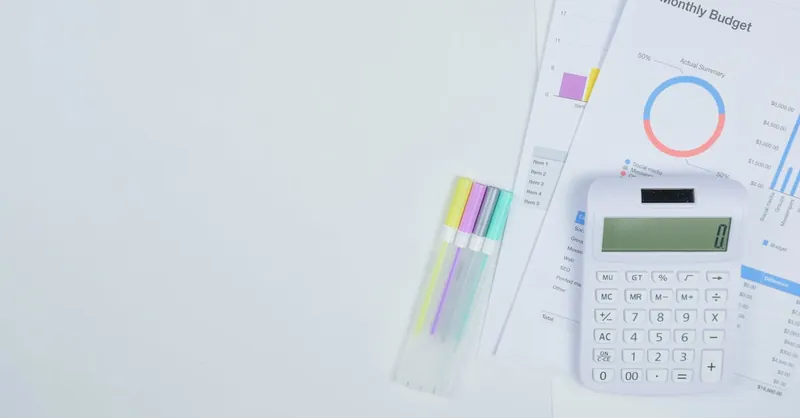
Image courtesy of Kindel Media
Building Multiple Income Streams: How Minimalism Can Support Entrepreneurship and Smart Investing
A cornerstone of achieving true financial freedom lies in building multiple income streams, which reduces dependency on a single source and accelerates wealth growth. Minimalism plays a critical role in supporting this entrepreneurial and investment mindset by fostering focus, reducing distractions, and aligning your financial efforts with purpose-driven goals. By simplifying your lifestyle and cutting unnecessary expenses, you free up both time and capital to invest in side hustles, passive income opportunities, and diversified investments.
How Minimalism Enhances Entrepreneurship and Investing Success
-
More Capital for Investment: Minimalist spending creates extra disposable income that you can redirect toward starting a business, investing in stocks, real estate, or other assets that generate passive income. This disciplined approach to money management enhances your ability to seize financial growth opportunities without incurring debt.
-
Greater Mental Clarity and Focus: By eliminating clutter and non-essential obligations, minimalism sharpens your focus on your entrepreneurial goals or investment strategies. This increased clarity supports better decision-making, strategic planning, and persistence—key traits for sustainable income growth.
-
Lower Risk Through Lean Operations: Minimalism encourages a lean approach in entrepreneurship, promoting cost-efficient startups and avoiding lifestyle inflation. Keeping business expenses minimal improves profitability and resilience during economic fluctuations, making side ventures more sustainable.
-
Flexibility to Explore Diverse Income Sources: Simplifying your lifestyle reduces the stress of maintaining high fixed costs, allowing you to explore various income streams such as freelancing, consulting, dividend investing, or rental properties. This diversified approach diminishes financial vulnerability and accelerates net worth building.
-
Intentional Reinvestment: With a minimalist mindset, you’re more inclined to reinvest profits into ventures or investment portfolios instead of succumbing to lifestyle inflation. This continuous reinvestment magnifies compound returns and fast-tracks your journey toward financial independence.
By leveraging minimalism as a foundation, you cultivate not only financial prudence but also the entrepreneurial spirit needed to develop multiple income streams. This synergy propels you beyond living paycheck to paycheck, enabling you to build lasting wealth while maintaining a simpler, more intentional lifestyle. In essence, minimalism equips you with the tools to cultivate smart investing habits and entrepreneurial ventures that fuel sustained financial freedom.

Image courtesy of Photo By: Kaboompics.com
Overcoming Challenges: Handling Societal Pressure and Emotional Attachments to Material Possessions
Embracing minimalism and pursuing financial freedom often means confronting deep-rooted societal pressures and emotional attachments that can make decluttering and simplifying feel daunting. In a culture that equates success and happiness with owning more, resisting the urge to accumulate can trigger feelings of guilt, anxiety, or fear of missing out. Additionally, material possessions frequently carry sentimental value or represent milestones, making the process of letting go emotionally complex. Recognizing and addressing these challenges is essential to maintain motivation and stay on track toward a more intentional and financially free life.
Navigating Societal Pressure
- Recognize External Influences: Advertisements, social media, and peer comparisons fuel consumerism by promoting “more is better.” Awareness of these influences empowers you to critically evaluate your desires and spend consciously.
- Redefine Success: Shift your mindset from material accumulation to meaningful experiences, personal growth, and financial independence as markers of success. This reframing reduces external pressure to conform.
- Build a Supportive Environment: Surround yourself with like-minded individuals or communities that prioritize minimalism and simplicity. Positive reinforcement and shared values strengthen resolve against societal norms.
Managing Emotional Attachments
- Practice Intentional Reflection: Before discarding an item, reflect on its true value—does it serve a purpose or spark joy, or is it maintained out of habit or obligation? This mindful approach helps disentangle identity from possessions.
- Create Memory Alternatives: Preserve sentimental value by taking photos or journaling stories associated with items, allowing you to let go without losing meaningful memories.
- Set Incremental Goals: Break decluttering into manageable steps to reduce overwhelm and gradually build confidence in releasing attachments.
By actively confronting societal expectations and emotional ties to belongings, you pave the way for a sustainable minimalist lifestyle that supports financial freedom. This emotional clarity not only eases the letting-go process but also fosters resilience against future pressures, ensuring your simplified life remains purposeful, fulfilling, and aligned with your core financial goals.
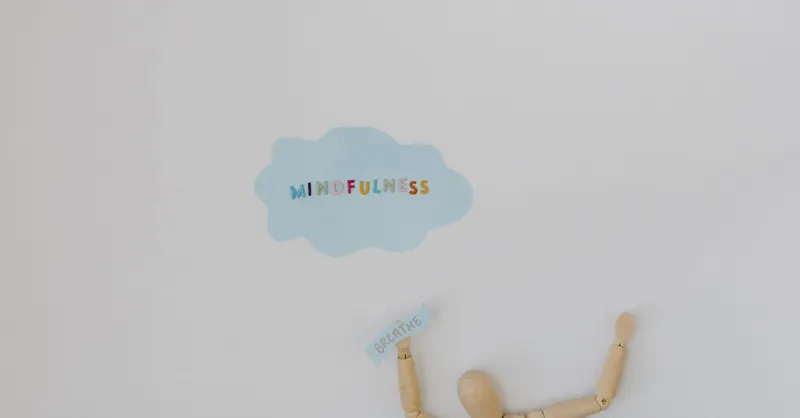
Image courtesy of Tara Winstead
Maintaining Minimalism for Financial Sustainability: Habits and Mindsets to Prevent Relapse
Sustaining a minimalist lifestyle for long-term financial freedom requires consistent habits and a resilient mindset to prevent slipping back into old spending patterns. Many people fall into the trap of relapse because minimalism is not a one-time event but an ongoing practice of intentional living. To maintain your simplified life and ensure financial sustainability, it’s essential to nurture habits that reinforce your core values while staying mindful of common pitfalls.
Key Habits to Sustain Minimalism and Financial Health
-
Regular Financial and Lifestyle Check-Ins: Schedule monthly or quarterly reviews of your budget, expenses, and possessions. This habit allows you to detect creeping clutter or unplanned spending early, keeping your financial goals aligned with your minimalist values.
-
Cultivate a Growth Mindset Toward Simplification: Understand that minimalism evolves as life changes. Embrace flexibility and continuous improvement rather than perfectionism. This mindset reduces stress and helps you adapt practices that support your current priorities.
-
Practice Gratitude and Contentment Daily: Reinforcing appreciation for what you already have diminishes the desire for excess and impulsive shopping. Gratitude strengthens your emotional connection to simplicity and keeps financial temptation at bay.
-
Set Clear Boundaries for Consumption: Limit exposure to advertising and social triggers, and establish personal rules (e.g., no purchases without a waiting period, or capping discretionary spending). Boundaries act as effective guardrails against impulsive financial decisions.
-
Engage in Community or Accountability Partnerships: Sharing minimalist goals with a supportive network promotes motivation and accountability. Learning from others who prioritize simplicity and financial freedom helps you stay committed and inspired.
Mindsets That Prevent Financial Relapse
-
Intentionality Over Restriction: View minimalism as a positive choice rather than a limitation. Focusing on what you gain—freedom, clarity, peace of mind—rather than what you give up keeps you engaged and prevents burnout.
-
Resilience to Consumer Culture: Cultivate awareness of societal pressure and advertising influences, reinforcing your reasons for minimalism when temptation arises. Developing this resilience is crucial to sustaining financial discipline.
-
Patience and Long-Term Vision: Financial freedom is a marathon, not a sprint. Embracing patience allows you to avoid quick fixes or lifestyle inflation, ensuring your minimalist financial path is sustainable and rewarding.
By integrating these habits and mindsets into your daily life, you create a strong foundation to maintain minimalism sustainably and protect your financial progress. This ongoing commitment transforms minimalism from a temporary experiment into a lifelong strategy that continuously supports simplification, intentional spending, and lasting financial independence.
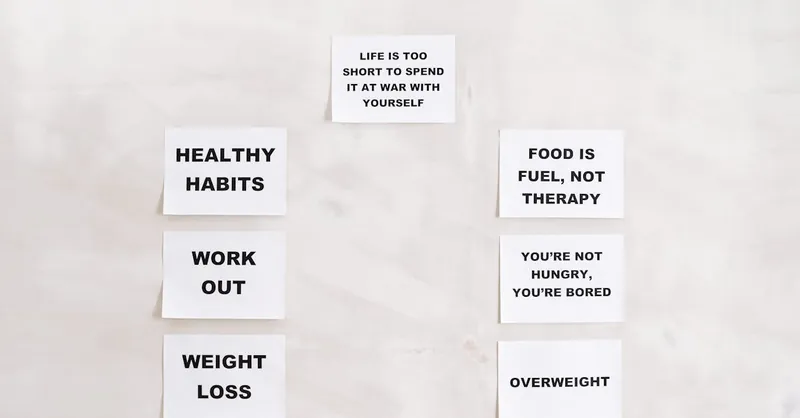
Image courtesy of Moe Magners
Inspiring Case Studies: Real-Life Stories of People Who Achieved Financial Freedom Through Minimalism
To truly grasp the transformative power of minimalism on financial freedom, it helps to explore real-life examples of individuals who have successfully embraced minimalist principles to reshape their financial destinies. These inspiring stories demonstrate how intentional living, mindful spending, and simplifying lifestyle choices not only reduce financial stress but also enable wealth-building and lasting independence.
Case Study Highlights: Minimalism as a Path to Financial Independence
-
The Debt-Free Blogger
After accumulating significant credit card debt, Sarah committed to a minimalist lifestyle by decluttering her home and cutting discretionary spending drastically. By adopting a monthly zero-based budget and selling unused possessions, she redirected savings toward paying off $30,000 in debt within two years. Beyond finances, Sarah reports increased mental clarity and freedom from material distractions. -
The Early Retirement Couple
Mark and Lisa downsized their home and embraced minimalism by eliminating non-essential expenses, such as multiple vehicles and luxury subscriptions. Their intentional consumption enabled them to save over 60% of their combined income, investing aggressively in index funds. Within 10 years, they reached financial independence and retired in their early 40s, attributing their success largely to the minimalist lifestyle that eliminated lifestyle inflation. -
The Entrepreneur Investor
Jamal leveraged minimalist values to support his side hustle and diversify income streams. By maintaining low personal and business overheads, he invested profits into rental properties and dividend stocks. Minimalism provided the financial flexibility and focus to grow multiple income sources, ultimately enabling him to quit his 9-to-5 job and achieve sustainable wealth.
Key Takeaways From These Success Stories
- Intentional Simplicity Drives Financial Efficiency: Minimalism encourages prioritizing spending on essentials and goals, reducing wasteful expenses and accelerating debt repayment or wealth accumulation.
- Flexibility Encourages Wealth-Building Opportunities: Simplifying lifestyle costs offers the freedom to pursue entrepreneurship, investments, or early retirement without financial strain.
- Mindset Shift Is Critical: Embracing contentment and aligning purchases with personal values create sustainable habits that support long-term financial health.
These examples reinforce that minimalism is not merely about living with less but about maximizing financial freedom through deliberate choices and simplified living. Whether you aim to eliminate debt, grow your investments, or enjoy early retirement, real people’s journeys illuminate the practical, achievable path minimalism offers toward lasting financial empowerment.
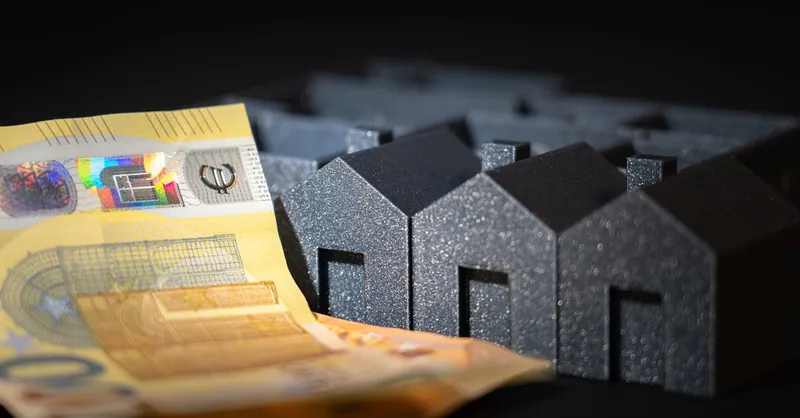
Image courtesy of Jakub Zerdzicki
